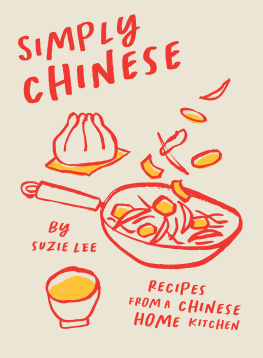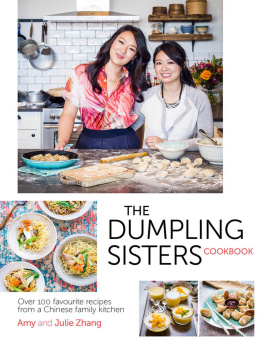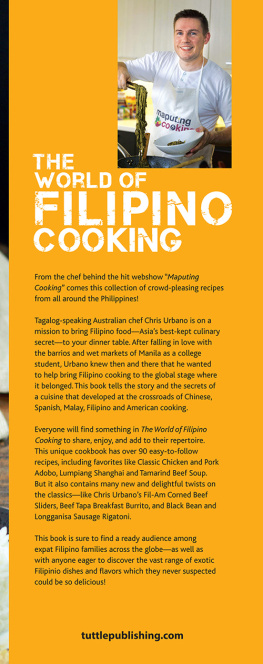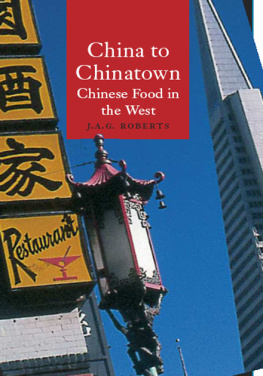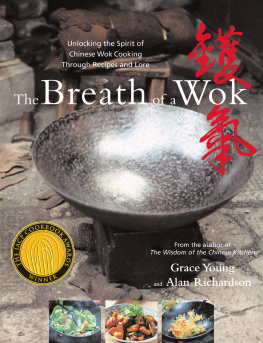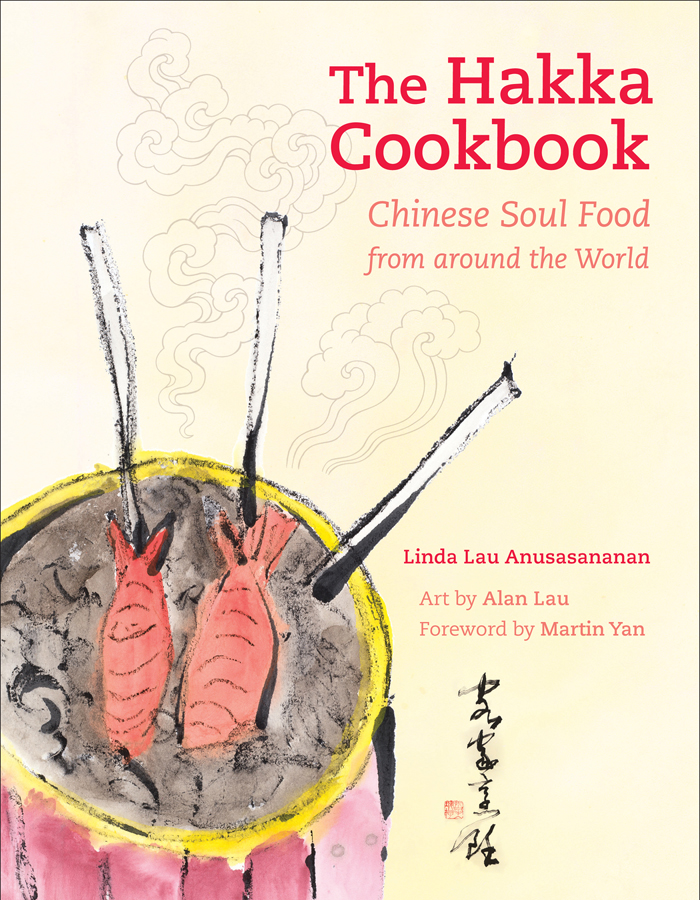Acknowledgments
I first envisioned this book in 2001. Finally, with the help of a newfound global network of Chinese pioneers, I can share it. Hakka tenacity triumphs. I extend thanks to the many people who paved my journey of discovery with their good food, expertise, recipes, stories, experiences, time, support, and patience. This book wouldnt be possible without them.
Major contributions came from Alan Chong Lau and Fah Liong. Alan, my brother, created the art that personalizes this book. Fah, my Hakka mentor, cooked more than twenty Hakka dishes for me, answered my many questions, interpreted, and helped me understand the basics of the Hakka kitchen. Without the help of Alan and Fah, this book might not have seen print.
In China, Hong Kong, and Taiwan, many chefs cooked Hakka feasts for me. One of the most helpful was Yan Si Ming (now deceased) in Beijing. Scholars including Sidney Cheung, a professor at the Chinese University of Hong Kong, and May (Yu-Hsin) Chang at the Foundation of Chinese Dietary Culture shared their research with me. My Hakka Gourmet Groupwhich consisted of my husband, Terry; my daughter, Lisa; my brother Alan Lau and his wife, Kazuko Nakane; my brother Gene Lau; my cousins Sue Chee, Jeannie Chow, and Yau Lau; and my Hakka friend Rebekah Luke and her husband, Peter Krapetraveled with me and helped with my research by eating endless Hakka banquets.
In Kuala Lumpur, my friend Sally Painter Hussein introduced me to her coworker Loh Kwai Lai, who recruited her Hakka aunt Loh Sye Moi to cook for me. Amy Wong (Wong Choon Wei), owner of the Eiffel Restaurant and writer at Famous Cuisine, a food magazine in Kuala Lumpur, gave me Hakka recipes. She and the magazine staff shared their expertise over a delicious Hakka lunch.
Violet Oon introduced me to her Hakka friends in Singapore. Doreen Ho Fui Fah and her sister, Ho Huey Cheen, shared recipes and family history over lunch. Through Violet, I also met Wong Chee Leong at Moi Kong in Singapore.
From a brief meeting with Mee Lan Wong, I learned about the Hakka in Mauritius.
Liliana Com introduced me to the Hakka community in Lima, Peru. Her mother, Natalie Com Liu, prepared lunch and shared her recipes. Professor Jorge Salazar (now deceased) and Joseph Cruz described the history of the Chinese in Peru. Alfredo Valiente guided me through Limas Chinatown.
In Hawaii, Kelley Oshiro and Paul Yuen told me about their shared family history. Another Hawaii resident, Margaret Lai, who originally came from Tahiti, described life growing up in French Polynesia.
Many friends in Toronto generously shared their contacts, recipes, and experiences. Filmmaker Cheuk Kwan introduced me to my key Hakka guides, Peter and Gladys Lee-Shanok, who in turn introduced me to an ever-growing circle of Hakkas in Toronto: Winston H. Chang Jr. and his family, P.K. Chen, Everard Hoo, Patrick Lee, Jennie Liao, Margarita Wong Liu, Liu Ying Hsien, Keith Lowe, Albert Lim Shue, and Carol Wong. At the Hakka Conference in 2008, Simone Tai introduced me to chefs Herbert Lee and Yong Soon, who both shared their Hakka specialties. At the conference I also met Ellen Oxfeld, a professor of anthropology at Middlebury College, who described her experience living in Meixian. Anthony Lin, of Danforth Dragon in Toronto, allowed me to watch him cook Hakka-Indian dishes in his kitchen.
In New York, Jacqueline Newman, editor of Flavor and Fortune, introduced me to the Lo family of Tangra Masala. I later interviewed Peter Lo, Lo Sim Fook, and Peter Tseng at their new restaurant, Tangra Asian Fusion Cuisine.
Back home in California, my uncle Hang Lau helped me with family history and shared his recipes. In San Francisco, chefs William Wong at Ton Kiang and Jin Hua Li at the Hakka Restaurant generously contributed their Hakka dishes.
Others also helped in many ways. Chih-Hui Burns translated English words into Chinese characters. Susan Stone proofread the pinyin and Chinese words. Grace Young showed me how to write a book proposal. Liv and Bill Blumer advised me on the book publishing business. Jerry Di Vecchio, my mentor at Sunset magazine, taught me how to write a recipe. Artist Chitfu Yu painted the beautiful calligraphy for the cover.
At the University of California Press, I appreciated Dore Browns and Kate Marshalls thoughtful suggestions and Emily Parks sharp eyes. Claudia Smelser merged the text and art in a graceful design.
Many thanks to Martin Yan for graciously writing the foreword to this book.
Finally, thanks to my husband, Terry Anusasananan, who as the ever-present taster ate endless rounds of pork belly and other Hakka dishes with gusto.
Basic Recipes
CHICKEN BROTH
In my mothers kitchen, there was always a pot of homemade broth brewing on the stove. It was a haphazard affair. She would throw bones and vegetable trimmings into the pot as they accumulated. She never refrigerated the broth; she just boiled it furiously once a day. She said that the boiling killed all the bacteria. Were still alive, but I suggest a safer routine: As you collect bones and scraps, freeze them. When you collect enough, make broth. Or you can readily buy chicken carcasses and pork bones (see note) at Asian supermarkets.
Broth can be stored in small portions in the freezer, ready to use. Most Chinese broths are light and clear. For a richer, more concentrated flavor, use a whole chicken.
Makes 2 to 3 quarts
4 to 5 pounds meaty chicken bones, such as a carcass, backs, wings, or necks, or 1 whole chicken (3 to 4 pounds), rinsed (see note)
6 quarts water
3 green onions, including green tops, ends trimmed
8 thin slices fresh ginger
3 large cloves garlic
1 teaspoon black peppercorns
1 tablespoon kosher salt, or to taste
Fill a 12-quart pan with the bones. Cover with the water. Bring to a simmer over high heat. Reduce the heat and simmer, uncovered, for 30 minutes, skimming off foam every few minutes.
Meanwhile, cut the green onions in half. With the flat blade of a knife, lightly crush the green onions, ginger, and garlic. After the water has simmered for 30 minutes, add the green onions, ginger, garlic, and peppercorns. Continue cooking, uncovered, so that the water barely simmers, until the broth is reduced by about half, 3 to 3 hours. Skim off the foam and fat occasionally.
With a slotted spoon, lift out the large bones and discard. Set a colander or large fine wire starainer over a large bowl or pan (for a clearer broth, line the colander with a double thickness of damp cheesecloth). Pour the broth into the colander. Discard the solids. If there is a lot of sediment, let the broth stand until the sediment settles, 20 to 30 minutes. Carefully ladle or pour off the clear broth into a large bowl, leaving the sediment behinda.
Add salt to taste; its best to salt lightly and do the final salting when the soup is complete. Use the broth or cover and chill up to 3 days. Or freeze in small portions in airtight containers, allowing at least 1 inch of headspace.
Note: | For a meatier flavor, replace half of the chicken pieces with about 2 pounds of meaty pork pieces, such as spareribs or pork neck.  |
CHILE SAUCE
It is easy to make fresh chile sauce to suit your taste. I styled these red and green sauces after those I tasted at Ton Kiang in San Francisco. The heat of the chile is concentrated in the yellow veins of capsaicin that run down the walls of the chile and in the seeds, which rub against the veins. Control the heat by the amount of the seeds and veins you use. These medium to medium-hot sauces keep in the refrigerator for a few months.




